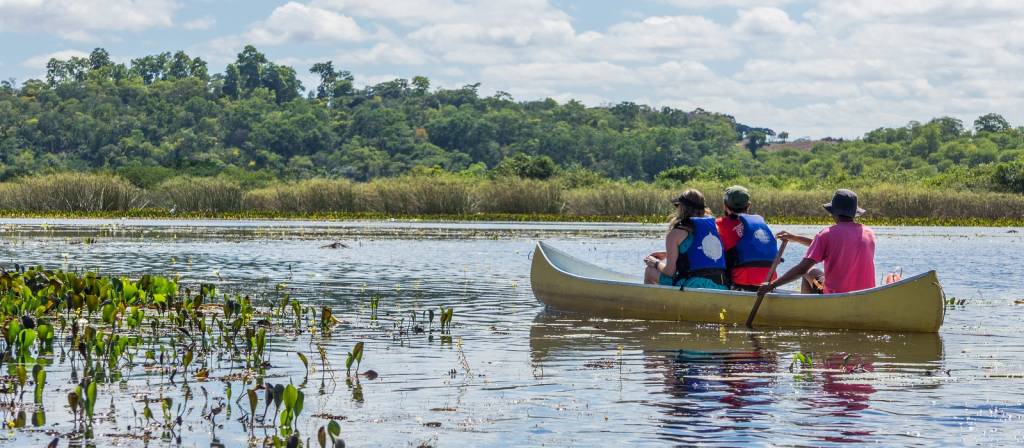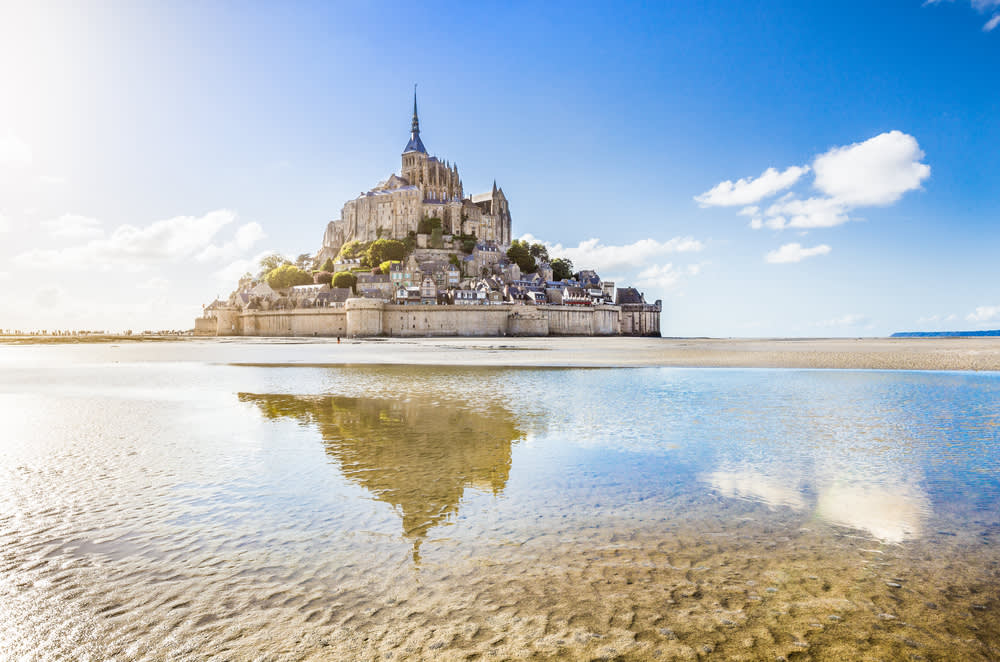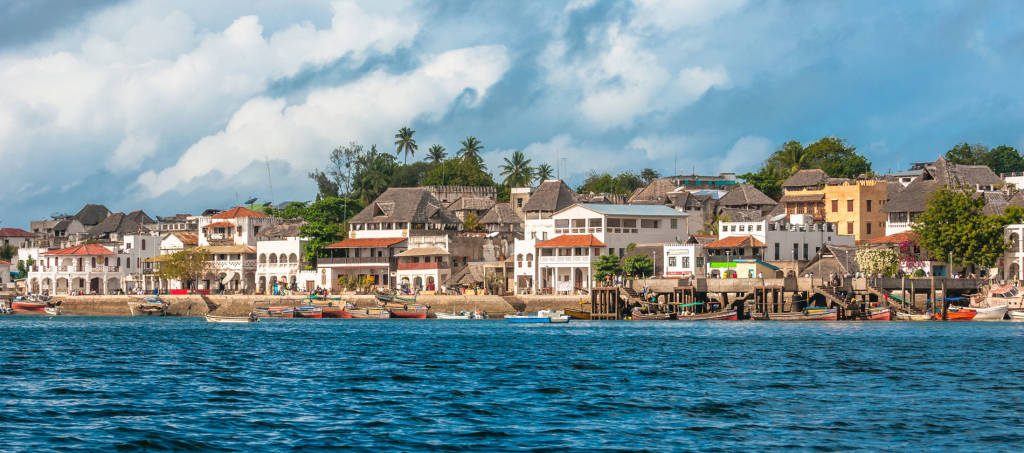UNESCO World Heritage Sites mark some of the most awe-inspiring places on Earth…even those that don’t typically make the front page of guidebooks.
Our experts at Enchanting Travels have spent years exploring some of the world’s lesser-known—but no less breathtaking—wonders, and now we’re excited to share their favorites with you.
1
India: The Lost City of Hampi
UNESCO World Heritage Site since 1986

Wandering through the boulder-strewn landscape of Hampi feels almost otherworldly. Scattered across the banks of the Tungabhadra River in Karnataka are thousands of ancient structures—forts, temples, and royal complexes—that tell the story of a mighty empire.
Between the 14th and 16th centuries, Hampi was the heart of the last great Hindu kingdom in South India and one of the largest cities in the medieval world. Walking a little over a mile along the river will take you past the intricate stone carvings of Vittala Temple, as well as Virupaksha Temple which was built in the 7th century and still serves as a prayer site today.
Be sure to time your visit with the sunset. Just a short walk from Virupaksha Temple, you’ll find that Sunset Point on Hemakuta Hill offers a breathtaking view of the surrounding landscape. Bathed in warm, golden light, it’s a moment that is nothing short of magical.
2
Brazil: The Pantanal Wetland
UNESCO World Heritage Site since 2000

Covering an area nearly half the size of Germany, the Pantanal is one of the world’s largest inland wetlands. And while that may not sound very attractive, it’s a natural paradise teeming with biodiversity. Jaguars, caimans, howler monkeys, giant otters, and more than 650 different types of birds call it home.
In fact, sightings here can be even more frequent and intimate than on many African safaris. For photographers and wildlife lovers alike, the Pantanal offers unforgettable encounters in one of the planet’s richest ecosystems.
3
France: Mont-Saint-Michel & Its Bay
UNESCO World Heritage Site since 1979

Rising from tidal flats off the Normandy coast, Mont-Saint-Michel looks like something out of a fairytale. Crowned by a soaring Gothic abbey overlooking a bay, this tiny island village is one of France’s most enchanting and best-preserved landmarks.
As you wander its cobbled lanes, past stone houses and quiet courtyards, it’s easy to imagine the world as it was centuries ago. The village’s medieval character has been carefully protected and restored over the years, bringing the past to life for those who cross the footbridge that connects the island to the rest of France.
And in the summer, the bay surrounding Mont-Saint-Michel comes to life in a completely different way. Dolphins are often spotted gliding through the warm waters, occasionally swimming alongside local fishing boats with surprising familiarity. Their playful presence adds a touch of wonder to an already unforgettable setting where nature, history, and legend intertwine.
4
The historic villages of Shirakawa-go and Gokayama
UNESCO World Heritage Site since 1996

Hidden deep in the Shōgawa River Valley are the mountain villages of Ogimachi, Ainokura, and Suganuma. These peaceful, secluded sites are perhaps best known for their traditional architecture. Done in a 19th century style called “gassho,” the houses feature steep, thatched roofs shaped like hands in prayer.
Built without nails and designed to withstand heavy snowfalls, some of these 19th century homes now serve as traditional minshuku inns. Guests are welcome to spend the night with a local family, enjoying home-cooked favorites, hearing stories passed down through the generations, and immersing themselves in rural Japanese life.
5
Cambodia: Koh Ker, the Lost City of Lingapura
UNESCO World Heritage Site since 2023

The ancient city of Lingapura was once the political and spiritual heart of the Khmer Empire, only to be swallowed by the jungle. It remained lost to time until the mid-19th century, when explorers rediscovered the ruins of this former capital.
Today, the archaeological site known as Koh Ker includes temples, sculptures, and murals. Most striking is Prasat Thom, a stepped pyramid over 100 feet tall that calls to mind Chichén Itzá half a world away.
Due to its recent designation as a World Heritage Site, Koh Ker remains uncrowded. Visitors here have a chance to explore Cambodia’s ancient past in solitude, only a few hours away from Angkor Wat.
6
Kenya: The Old Town of Lamu
UNESCO World Heritage Site since 2001

Founded in 1350, the island town of Lamu is the oldest and best-preserved Swahili settlement in the world. Though it sits just off the coast of Kenya, today it feels a world apart. There are no vehicles of any kind in the old town. Instead, goods are still moved by donkey through narrow alleys lined with whitewashed coralstone houses.
Along with reverence for the past, the spirit of community runs deep here too. You’ll see it in the layout of the town with wide verandas (daka), public gathering spaces, and seafront benches (baraza) all encouraging connection and conversation. In Lamu, the rhythm of daily life is a gentle one and tradition is found around every corner.
7
Morocco: The Medina of Tétouan
UNESCO World Heritage Site since 1997

While Moroccan cities like Marrakesh and others often take the top spot on traveler’s wish lists, the medina (the core of the old city) of Tétouan is worth the detour. Settled by Andalusian refugees approximately 500 years ago, their legacy is still alive today in the city’s music, buildings, and cuisine. Unlike the medinas of its larger counterparts, Tétouan’s remains largely untouched by modern developments.
For a deeper exploration of the city’s history, we also recommend a visit to the nearby Ensanche district. Built during Tétouan’s time as the capital of the Spanish protectorate, this neighborhood, with its neoclassical touches and leafy plazas, was added to the UNESCO World Heritage Tentative List in 2024.
8
South Africa: Sites of Nelson Mandela’s Legacy
UNESCO World Heritage Site since 2024

A year ago, 14 locations instrumental in the fight for freedom against apartheid were recognized as part of our world heritage. Together they tell the story not only of the great Nelson Mandela, but of his nation’s courage and transformation.
Located across the country, these sites include the Waaihoek Wesleyan Church in Bloemfontein (where the African National Congress was founded), Constitution Hill in Johannesburg (home to South Africa’s Constitutional Court), and the Union Buildings in Pretoria, which is now the seat of government and site of Mandela’s inauguration.
9
Uganda: Bwindi National Park
UNESCO World Heritage Site since 1994

Hidden in the misty highlands of southwestern Uganda, this is one of the last remaining refuges for the critically endangered mountain gorilla. Approximately 1,000 remain in the wild, and nearly half of them call this Park home.
Finding gorillas in this dense, tropical forest is no easy task. Visitors must trek over muddy trails and steep hillsides, but folks who persevere may find themselves rewarded with the sight of these gentle giants—and their families—up close.
10
India: Le Corbusier’s Capitol Complex in Chandigarh
UNESCO World Heritage Site since 2016

And finally we close our list in the same country where we began, but in a different place. Designed in the 1950s by the Swiss-French architect Le Corbusier, this planned city was created as a symbol of progress. At its heart sits the Capitol Complex, which is home to striking modernist government buildings like the High Court and Legislative Assembly.
Nicknamed the “City Beautiful,” Chandigarh balances its orderly layout with lush gardens, tranquil lakes, and a relaxing pace of life. Best of all, in addition to its draw as an architectural pilgrimage site, it’s also the perfect base for exploring the nearby Himalayas or the vibrant culture in Punjab.
The World is Waiting
From hidden villages to medieval alleys, we hope these ten sites have given you a glimpse of the wonders that wait in unexpected places. Whether you’re drawn to quiet beauty, living history, or wild landscapes, there’s something powerful about stepping off the beaten path. And if any of these have sparked your curiosity, we’d love to help plan a trip that leads you there and brings them to life.


